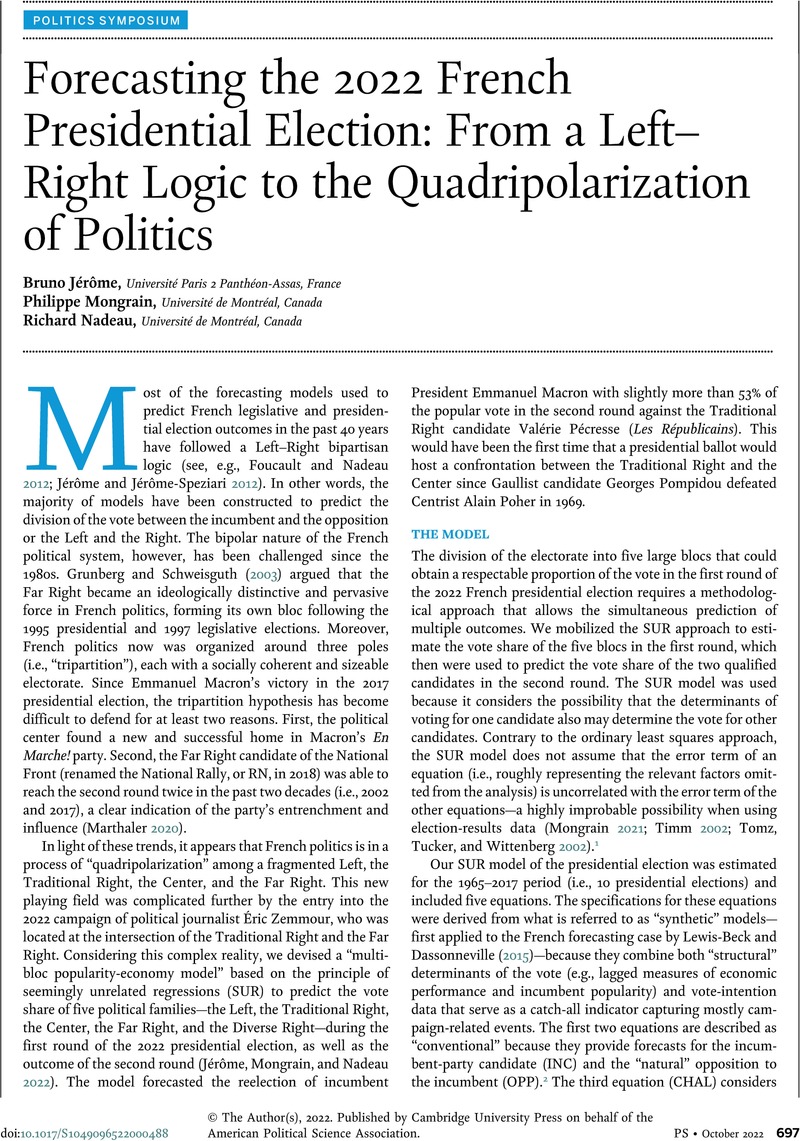Crossref Citations
This article has been cited by the following publications. This list is generated based on data provided by Crossref.
Mongrain, Philippe
2022.
Predicting in an (increasingly) unpredictable system? Forty years of election forecasting in France.
French Politics,
Vol. 20,
Issue. 2,
p.
210.
Fry, John
Hastings, Thomas
and
Binner, Jane
2025.
An options-pricing approach to forecasting the French presidential election.
Journal of the Operational Research Society,
Vol. 76,
Issue. 1,
p.
167.



